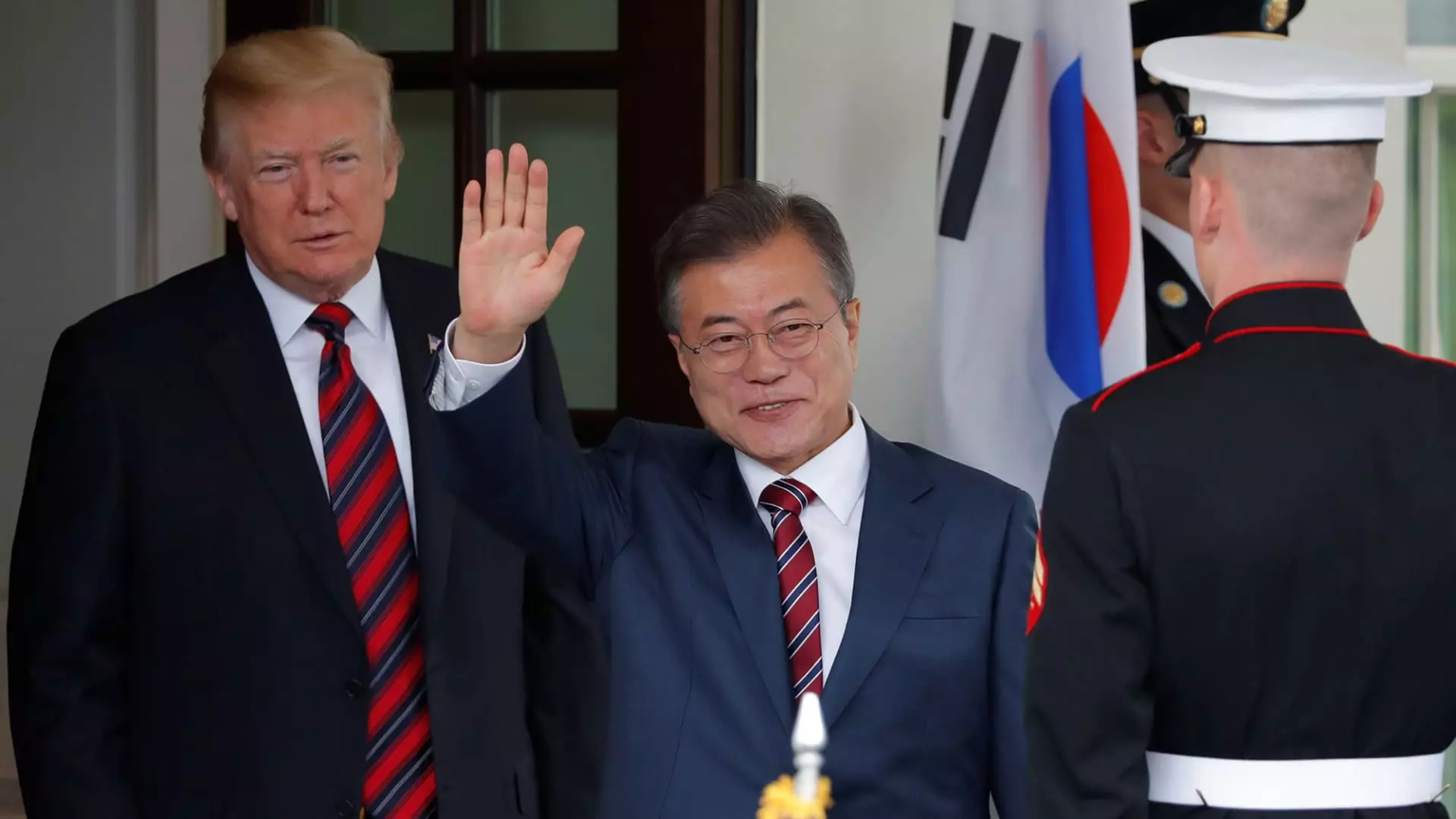In the midst of rising trade tensions and economic policy shifts, the possibility of increased tariffs on foreign goods looms large over the U.S. automotive sector. President Donald Trump’s administration has hinted at implementing tariffs that would primarily target foreign manufacturers in countries like South Korea and Japan, which could dramatically reshape the dynamics of car imports in the United States. As data shows, these East Asian countries collectively accounted for a substantial 16.8% of vehicles sold in the U.S. during the past year, emphasizing their critical role in the American automotive market.
The potential repercussions of these tariffs are particularly pressing for major automotive players such as General Motors (GM) and Hyundai Motor Company. With South Korea recently surpassing Japan to become the second-largest source of imported vehicles in the U.S., the stakes are exceedingly high. Unlike the trade agreements in place with Canada and Mexico, tariffs on these imports are minimal, currently standing at 2.5% for Japanese vehicles. In stark contrast, President Trump has threatened a 25% tariff that could significantly affect manufacturers in North America—a move that has generated considerable alarm in the industry.
The implications of proposed tariffs on South Korean and Japanese automakers mirror a complex web of trade relationships and market dynamics. For instance, Hyundai, a leading automotive exporter, has navigated these existing tariff structures with relative ease, exporting vehicles to the U.S. tariff-free. Nevertheless, the recent surge in sales—jumping from 845,000 cars in 2019 to more than 1.37 million units in 2024—also places it in the crosshairs if tariffs are enforced.
Japan’s automotive exports have experienced a decline, with its market share dipping despite a solid historical presence in the U.S. market. Industry experts are concerned that additional tariffs could exacerbate these trends, presenting a formidable obstacle to Japanese manufacturers like Toyota, Nissan, and Honda—who have long relied on their competitive pricing structures bolstered by near-zero tariffs.
The Broader Consequences for Consumers and Automakers
One of the most contentious issues surrounding the introduction of tariffs is the potential impact on consumers. Economists fear that automakers will inevitably pass on the costs of additional tariffs to consumers, leading to increased vehicle prices. Should this occur, there’s a high likelihood that overall demand for vehicles may decline, placing additional strain on manufacturers already grappling with changing consumer preferences and economic uncertainty.
Hyundai’s ascendance as the largest automotive exporter to the U.S. has made the company particularly vulnerable to these trade changes. GM also stands at a critical juncture, having ramped up its imports from South Korea significantly in recent years. The automaker reported that its sales of South Korean-produced vehicles surged from 173,000 in 2019 to over 407,000 last year. This escalating dependence on imported models raises crucial questions about the future strategies of these manufacturers as they navigate an uncertain tariff landscape.
According to Terence Lau, an expert in trade law and previous adviser to Ford Motor, the automotive industry must adapt quickly to tariff changes, regardless of how burdensome they may seem. Lau insists that while a small tariff may present a nuisance, higher tariffs have a more pronounced effect, significantly constraining profit margins and leading to difficult adjustments for automakers.
Ford’s CEO, Jim Farley, has emphasized the need for a holistic approach to tariffs, advocating for a comprehensive review that includes all foreign competitors rather than targeting specific nations. This perspective highlights the intricate nature of global automotive trade, where selective tariffs could disrupt market equilibrium.
As discussions surrounding additional tariffs heat up, uncertainty looms over the industry’s future. While the White House has yet to make definitive statements on the inclusion of South Korea and Japan in these tariff discussions, the automotive sector waits with bated breath. The potential fallout from such decisions could lead to market distortions that would affect everything from manufacturing jobs to consumer prices.
As the situation unfolds, it remains unclear how automakers will respond or adapt to the proposed changes. The hope is that a balanced and reflective approach to trade policy can emerge, ensuring that the U.S. automotive industry—vital for both the economy and consumer choice—can thrive in an increasingly complex global landscape. The coming weeks will be critical as stakeholders navigate the potential fallout of these tariffs and strive for a sustainable path forward.

